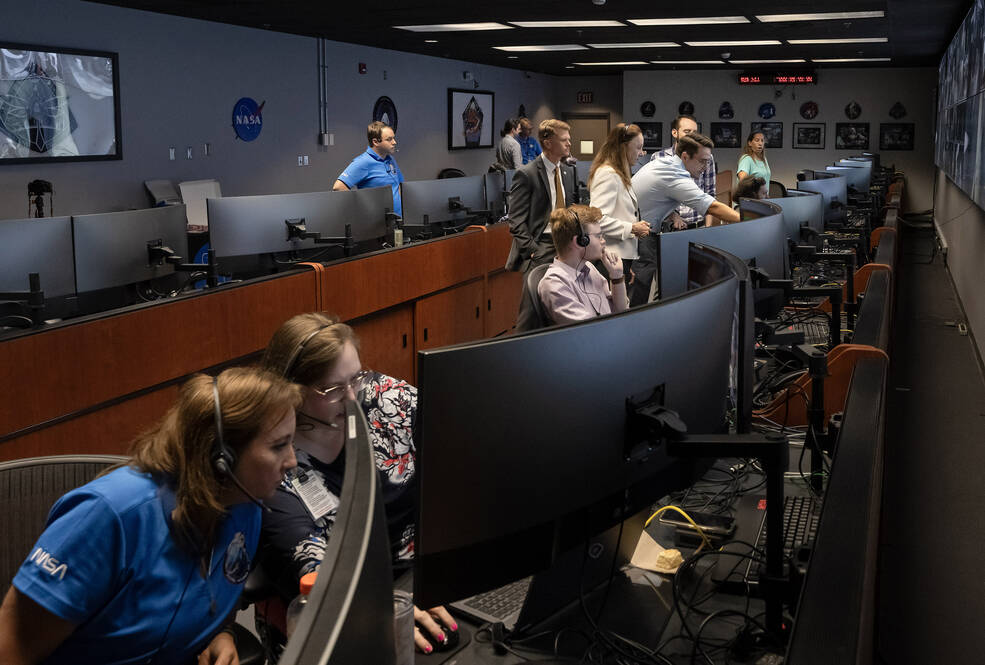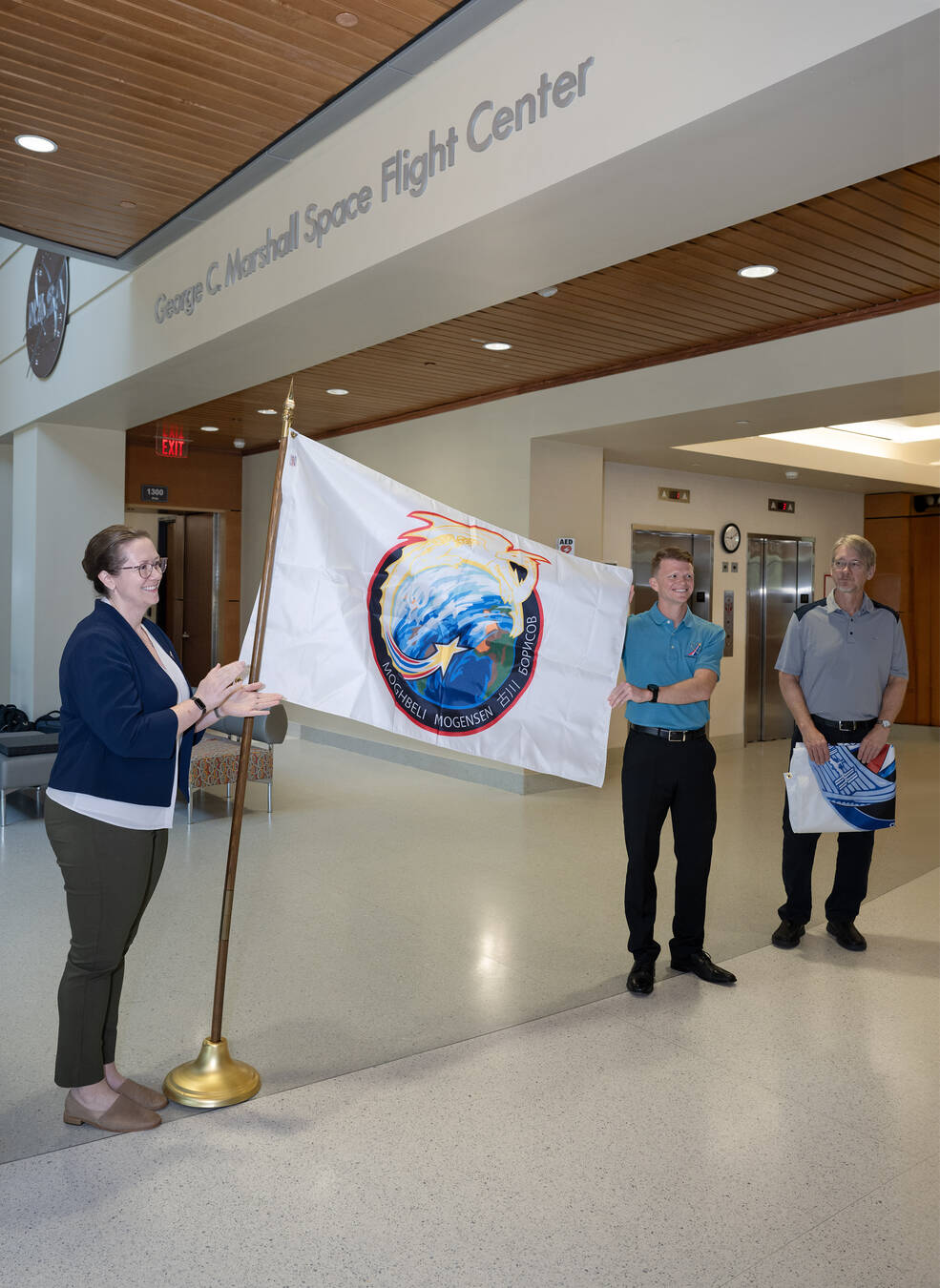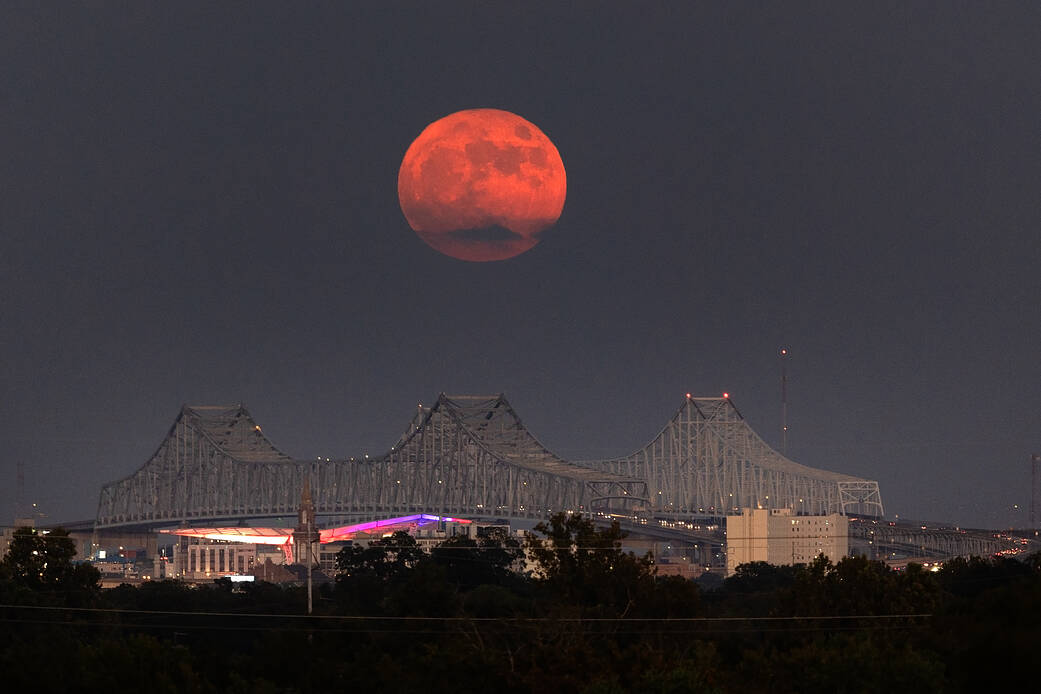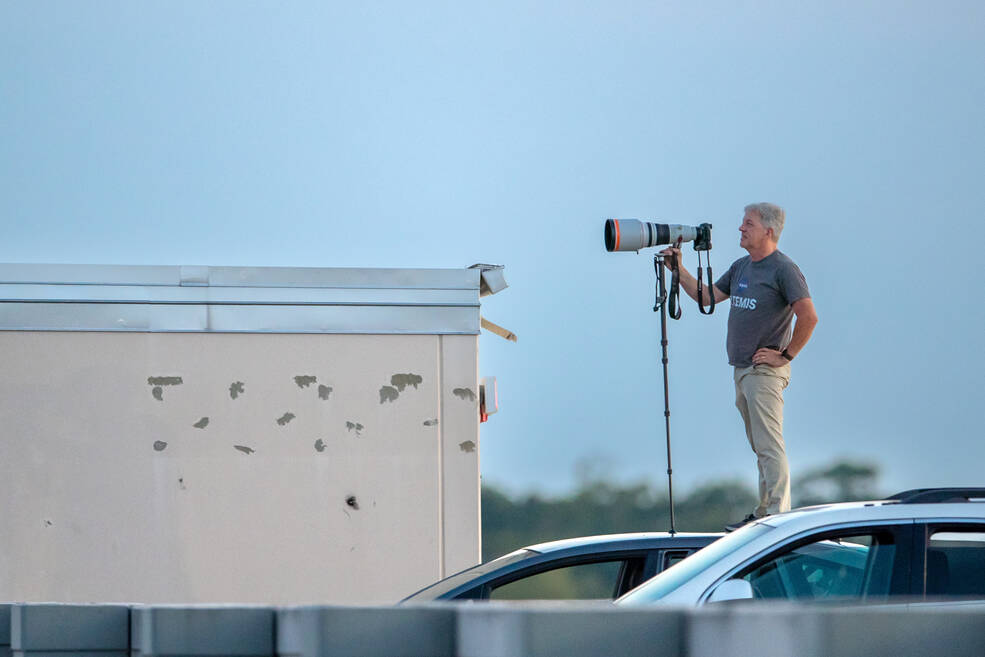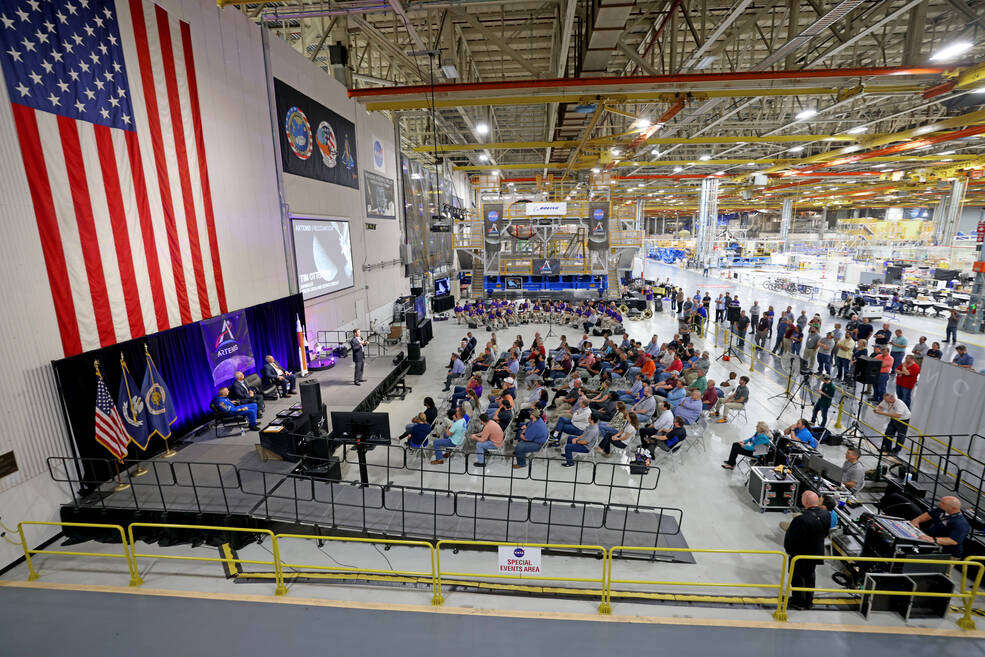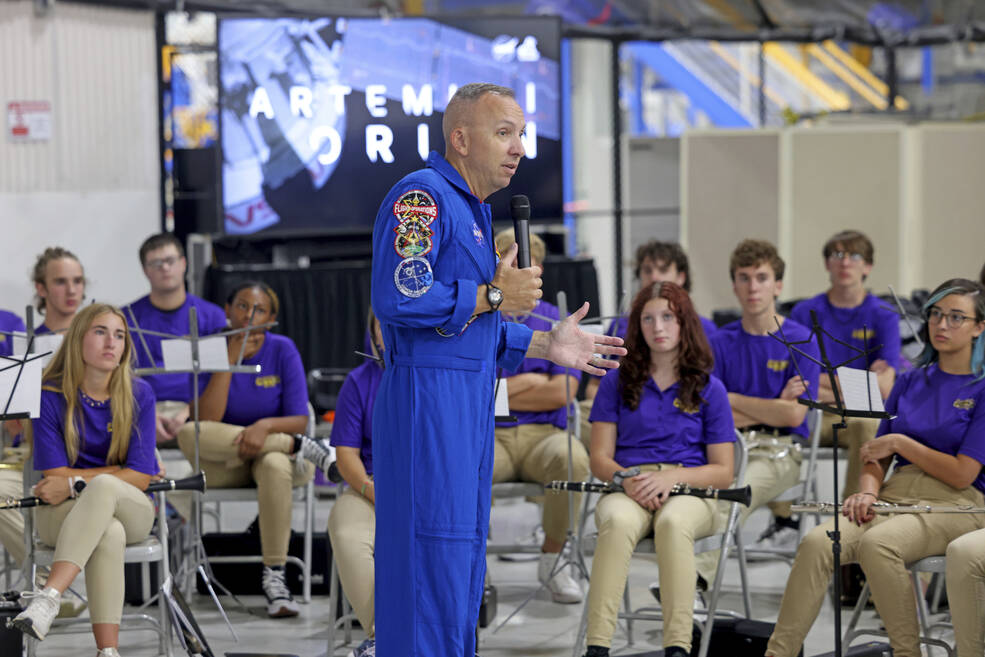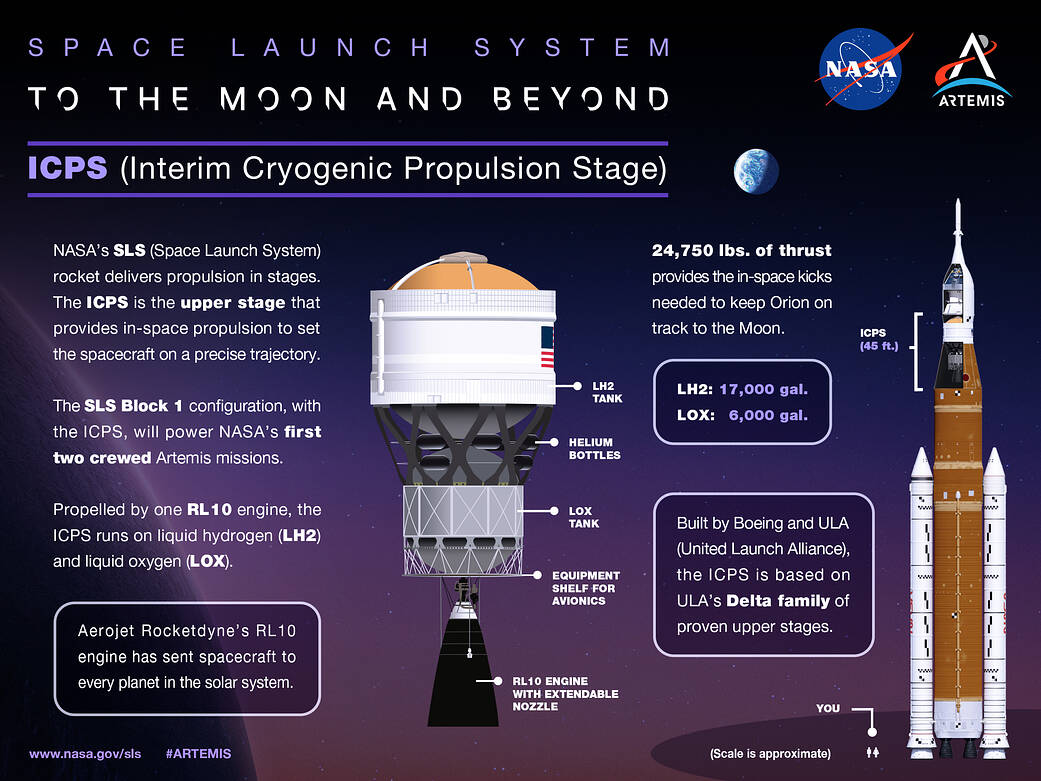The Marshall Star for September 6, 2023.
In This Week’s Star
- Marshall Helps Ready NASA’s SpaceX Crew-7 Mission for Flight
- NASA’s SpaceX Crew-6 Safely Returns to Earth Near Florida Coast
- Just Super: Michoud Photographer Captures ‘Blue Moon’ Above New Orleans Bridgeh
- Orion, Lockheed Martin Honor Michoud Contributions to Artemis I Success
- NASA Completes Last OSIRIS-REx Test Before Asteroid Sample Delivery
- NASA’s SLS Mega Rocket: What Is the ICPS?
- Moon Orbiter Preparing Artemis Astronauts Featured on ‘This Week at NASA’
- El Gordo: A Galaxy Cluster That Pushes the Limits
Marshall Helps Ready NASA’s SpaceX Crew-7 Mission for Flight
By Jessica Barnett
As astronauts on NASA’s SpaceX Crew-7 mission launched to the International Space Station in the early morning hours of Aug. 26, a team at NASA’s Marshall Space Flight Center was behind them, supporting day-of launch operations and activities from the center’s HOSC (Huntsville Operations Support Center). Cheers and claps erupted from the staff inside the CCR (Configurable Control Room) as they watched the crew ascend into the night sky, but the Marshall team’s support of the launch began long before lift-off.
Marshall’s commercial crew support team is part of a larger effort from NASA to support SpaceX’s contracted flight to the International Space Station as part of the agency’s Commercial Crew Program.
The Marshall team’s work begins weeks before countdown with flight readiness checks and reviews at the center, industry, and agency levels. As Crew-7 made its way to Launch Complex 39A at NASA’s Kennedy Space Center, members of the Marshall team were in the CCR inside the HOSC, helping to monitor the SpaceX Falcon 9 rocket and Dragon spacecraft. The HOSC is a multi-mission facility that provides engineering and mission operations support for NASA’s Commercial Crew Program, Space Launch System rocket, Artemis lunar science missions, and science conducted on the space station.
Gus Martinez, Marshall’s Merlin engines subsystem manager for CCP rockets, monitored the nine Merlin engines that make up the first stage of the SpaceX Falcon 9 used to transport Crew-7 into Earth orbit. He spent the months leading up to launch supporting the team helping to verify the hardware was ready for flight.
“We ensure that hardware is good to go for use with people on the vehicle,” Martinez said. “Every time there’s a new mission cycle, we get a booster assigned to us. We follow the hardware.”
The same is true for the cargo also aboard the spacecraft, with Marshall team members monitoring and collecting data throughout launch and flight, then relaying it to payload developers.
Elsewhere inside the HOSC, a second team supports voice, video, and multiple data links between the spacecraft and those still on Earth from the Data Operations Control Room, ensuring the fidelity of communications connections.
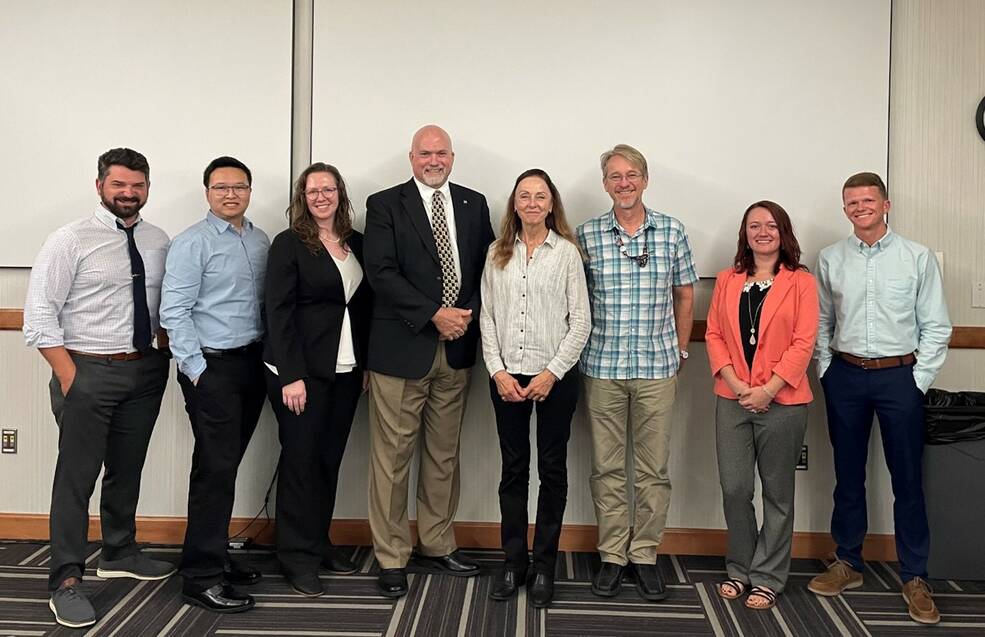
“Our ground systems and data operations personnel process telemetry to and from the rocket during all phases of flight,” said Michael Vigo, data operations expert at Marshall. “Our flight control teams must be very well-versed in the systems and subsystems of these spacecraft that we’re supporting to ensure crew and spacecraft safety, so we can accomplish our science mission utilization objectives.”
Together, their work helps establish safe, reliable, and cost-effective crew transport to and from the space station. Maggie Freeman, a program analyst for the CCP Launch Vehicle Systems Office at Marshall, said the program is one of the most exciting places to work within NASA.
“We are actively launching multiple times per year, we get to work with innovative aerospace companies, and we get to support our NASA astronauts by certifying commercial spacecraft for safe flight to the International Space Station,” Freeman said.
The Aug. 26 launch was Martinez’s sixth with the Commercial Crew Program. “It was fantastic,” he said. “We had a couple of a new people supporting on consoles, and seeing their faces light up as the second stage engine cut off and the stage separated from Dragon as it reached orbit is always a great thing to see.”
Lisa McCollum, launch vehicle deputy manager at Marshall, shared the sentiment.
“It is awesome to see Crew-7 successfully launched and safely on the space station. It is very exciting to support day-of launch operations, but that’s just a small part of the work our team performed to ensure mission readiness,” McCollum said. “Many of our team members stepped up and took on new responsibilities as part of this mission, and they did an outstanding job.”
Crew-7 will conduct new scientific research and experiments, including the collection of microbial samples from the exterior of the space station, the first study of human response to different spaceflight durations, and more.
Meanwhile, the Marshall team will be gearing up to do another round of checks and reviews before Crew-8 launches next year. Part of that process includes reviewing data from the Crew-6 team and Crew-7 flight to make sure everything performed as intended.
“I’m incredibly proud of our team for demonstrating unwavering commitment to mission success,” Freeman said.
Barnett, a Media Fusion employee, supports Marshall’s Office of Strategic Analysis & Communications.
NASA’s SpaceX Crew-6 Safely Returns to Earth Near Florida Coast
After splashing down safely in a SpaceX Dragon spacecraft off the coast of Jacksonville, Florida, on Sept. 3, NASA’s SpaceX Crew-6 completed the agency’s sixth commercial crew rotation mission to the International Space Station. The international crew of four spent 186 days in orbit.
NASA astronauts Stephen Bowen and Woody Hoburg, as well as UAE (United Arab Emirates) astronaut Sultan Alneyadi and Roscosmos cosmonaut Andrey Fedyaev, returned to Earth at 11:17 p.m. CDT. Teams aboard SpaceX recovery vessels retrieved the spacecraft and its crew.
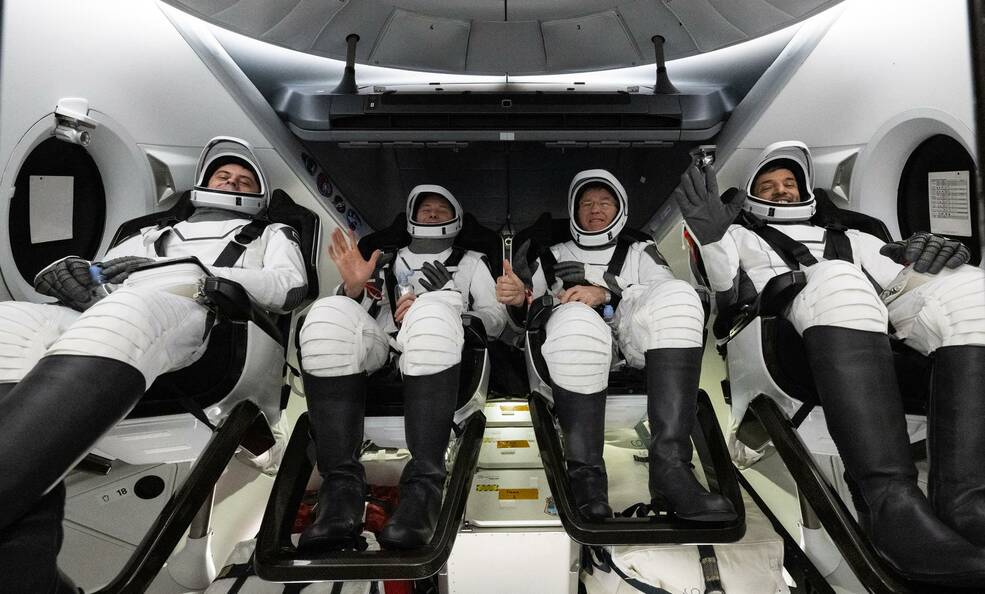
“After spending six months aboard the International Space Station, logging nearly 79 million miles during their mission, and completing hundreds of scientific experiments for the benefit of all humanity, NASA’s SpaceX Crew-6 has returned home to planet Earth,” said Administrator Bill Nelson. “This international crew represented three nations, but together they demonstrated humanity’s shared ambition to reach new cosmic shores. The contributions of Crew-6 will help prepare NASA to return to the Moon under Artemis, continue onward to Mars, and improve life here on Earth.”
The Crew-6 mission lifted off at 11:34 p.m. CST March 1, 2023, on a SpaceX Falcon 9 rocket from NASA’s Kennedy Space Center. About 25 hours later, Dragon docked to the Harmony module’s space-facing port. On May 6, the crew completed a port relocation maneuver to the Earth-facing port ahead of the arrival of a SpaceX Dragon cargo spacecraft carrying new solar arrays, science investigations, and supplies to the orbiting laboratory. The crew undocked from the space station at 6:05 a.m. Sunday, to begin the trip home.
Bowen, Hoburg, Alneyadi, and Fedyaev traveled 78,875,292 miles during their mission, spent 184 days aboard the space station, and completed 2,976 orbits around Earth. The Crew-6 mission was the first spaceflight for Hoburg, Alneyadi, and Fedyaev. Bowen has logged 227 days in space over four flights.
Throughout their mission, the Crew-6 members contributed to a host of science and maintenance activities and technology demonstrations. Bowen conducted three spacewalks, joined by Hoburg for two, and Alneyadi for one, preparing the station for and installing two new IROSAs (International Space Station Roll-Out Solar Arrays) to augment power generation for the station.
The crew contributed to hundreds of experiments and technology demonstrations, including assisting a student robotic challenge, studying plant genetic adaptations to space, and monitoring human health in microgravity to prepare for exploration beyond low Earth orbit and to benefit life on Earth. The astronauts released Saskatchewan’s first satellite which tests a new radiation detection and protection system derived from melanin, found in many organisms, including humans.
The Payload Operations Integration Center, located at NASA’s Marshall Space Flight Center, consists of numerous team members who operate, plan, and coordinate the science experiments onboard the space station 24 hours a day, 365 days a year.
This was the fourth flight of the Dragon spacecraft, which was named Endeavour by retired NASA astronauts Bob Behnken and Doug Hurley on its first voyage for the agency’s SpaceX Demonstration Mission 2. The spacecraft returned to Florida for inspection and processing at SpaceX’s refurbishing facility at Cape Canaveral Space Force Station, where teams will inspect the spacecraft, analyze data on its performance, and prepare it for its next flight.
The Crew-6 mission is part of NASA’s Commercial Crew Program, and its return to Earth follows on the launch of NASA’s SpaceX Crew-7, which docked to the station Aug. 27, beginning another long-duration science expedition.
The goal of NASA’s Commercial Crew Program is safe, reliable, and cost-effective transportation to and from the International Space Station and low Earth orbit, which maximizes research time and increases opportunities for discovery aboard humanity’s microgravity laboratory and testbed for exploration, including helping NASA prepare for human exploration of the Moon and Mars.
Just Super: Michoud Photographer Captures ‘Blue Moon’ Above New Orleans Bridge
By Wayne Smith
It was a full moon, blue moon, and supermoon.
By any name, an image captured by a photographer at NASA’s Michoud Assembly Facility, located in New Orleans, on Aug. 30 was, well, super.
Michael DeMocker took the spectacular image of the super blue moon – which had an orange hue –rising over the Crescent City Connection Bridge in New Orleans, which is home to Michoud.
The full moon is “super” because its orbit is slightly closer to Earth, making it appear slightly brighter and larger than a regular full moon. It’s “blue” because it’s the second full moon in a month. About 25% of all full moons are supermoons, but only 3% of full moons are blue moons. The next super blue moons will occur in a pair in January and March of 2037.
According to a NASA article about blue moons, the Moon travels around our planet in an elliptical orbit, or an elongated circle, with Earth closer to one side of the ellipse. Each month, the Moon passes through the point closest to Earth (perigee) and the point farthest from Earth (apogee). When the Moon is at or near its closest point to Earth at the same time as it is full, it is called a “supermoon.” During this event, because the full moon is a little bit closer to us than usual, it appears especially large and bright in the sky. When the Moon is closest to Earth (a “supermoon”), it looks about 14% bigger than when it’s farthest from Earth. It tends to have a more yellow or orange hue when it’s low in the sky, compared to when it’s high overhead. This happens because the Moon’s light travels a longer distance through the atmosphere.
Michoud and other NASA social media channels shared the photo, putting DeMocker’s Luna image in the spotlight. So, how did DeMocker get the photo? Here’s his once in a blue moon story.
“It was my last chance to photograph a blue supermoon until 2037, so I didn’t want to waste my shot,” DeMocker said. “I did a great deal of planning on apps and search engines to find an elevated spot where the rising moon would line up with a New Orleans landmark. After studying the possibilities, I chose to photograph the downtown Crescent City Connection bridge over the Mississippi River from the roof of a parking garage in a suburb west of the city.”
When DeMocker got there, however, he found that power lines were running right through the middle of his planned shot. “The only way to push them low enough in the frame was to climb on the roof of my car, which is used to this kind of photographer abuse, and shoot from there,” he said. “You can still see the power line, but at least it isn’t bisecting the bridge. At first, it looked like clouds on the horizon were going to spoil the show, but the top of the Moon thankfully appeared just above the bridge before revealing itself in full. After getting the image, I climbed down and promised the car I would take it to a carwash the next day to get rid of the footprints.”
Michoud plays a critical role in NASA’s Artemis missions and the plan to return humans to the lunar surface for the first time in more than 50 years. Known as America’s Rocket Factory, Michoud builds the stages for NASA’s powerful SLS (Space Launch System) rocket and structures for the Orion spacecraft. NASA’s Marshall Space Flight Center manages Michoud and the SLS Program.
Smith, a Media Fusion employee and the Marshall Star editor, supports Marshall’s Office of Strategic Analysis & Communications.
Orion, Lockheed Martin Honor Michoud Contributions to Artemis I Success
By Heather Keller
Orion program managers joined Lockheed Martin and leadership at NASA’s Michoud Assembly Facility Aug. 29 to celebrate the individual and team accomplishments that contributed to the successful Artemis I mission.
Following a welcome by Michoud Director Lionel “Lonnie” Dutreix, Orion Crew and Service Module Office Manager Tim Otterson led off the event recalling his last visit to Michoud when the team was nearing completion of the Orion spacecraft elements for Artemis I.
“It was impressive to be with the team… the guys took the time to understand what was going on and there was a real pride and passion in getting it right,” Otterson said. “I was struck by that, and it stuck with me.”
Otterson expressed his gratitude to the team for their continued work on the program, including the completion and delivery of Orion capsules for Artemis II – IV to NASA’s Kennedy Space Center. “It’s really just a testament of that spirit of dedication and caring for what you do day in and day out …,” he said. “On behalf on the Orion program, our program manager, Howard Hu, we just want to extend our gratitude, our thanks, and appreciation for what you guys do day in and day out here at Michoud.”
Otterman then introduced a video highlighting the Orion spacecraft’s record-breaking Artemis I flight.
Blaine Brown, Lockheed Martin director for Orion Spacecraft Mechanical Systems, recalled the initial planning for Orion, including the process of selecting the proper site for production.
“I remember working the proposal for this,” Brown said. “It was called CEV (crew exploration vehicle) at the time, back in 2005, and we were making decisions where we were going to do all the work across the country… Several of us here were making tours around the various facilities, and that’s when we made the decision to do all the primary structure production here at Michoud.”
Brown then recapped the path of Orion to get to the Artemis I launch and invited Otterson to join him as they showed highlights from Orion’s inaugural mission around the Moon.
Otterson explained key maneuvers, which helped to test the spacecraft’s capabilities, noting the team’s ability to complete more tests than originally planned due to the exemplary performance of the vehicle.
“The performance of the vehicle was beyond what was expected,” Otterson said. “We set out to originally do 160 flight test objectives to really stress out the vehicle, and we did so well with that, that during the mission we added 21 more, and really pushed the envelope on what the vehicle could do. It really sets us up well for the upcoming mission… We truly are just getting started.”
NASA astronaut Randolph “Randy” Bresnik wrapped up the presentation portion of the event with a look ahead to Artemis II and beyond, including similarities and differences between the first and second missions.
“That will be the first time that human beings will be leaving low Earth orbit since Apollo 17 in December of 1972,” Bresnik said. “That’s a big deal, and these people made it happen.”
Bresnik stressed the importance of what the Michoud team does daily to help ensure a safe journey for the astronauts and thanked the employees for their dedication to the mission.
“It’s an amazing, exciting time,” Bresnik said. “I thank you guys for your part in getting us to where we are now. I encourage you to keep up the same attention to detail, safety, the quality of work that you’re doing so we can get to these missions in the future.”
Orion and Lockheed Martin leadership joined Dutreix, Otterson, Brown, and Bresnik on stage to award nine team and seven individual awards for outstanding performance and contributions to the success of Artemis I. Award recipients were presented with a framed certificate containing a mission patch, which was aboard Orion’s historic flight.
The event concluded with a performance of “Fly Me to the Moon” by local musicians from the Hahnville High School Symphonic Band. Prior to the Orion event, the band received a tour of Michoud’s rocket factory and a private question-and-answer session with Bresnik as part of Michoud’s STEM outreach initiative. The band was also presented with a flown patch to commemorate the day.
The Michoud employee recognition event comes towards the tail-end of a summer long tour in which Orion and Lockheed Martin leadership have visited contributing sites nationwide to express appreciation to everyone who supported the Artemis I mission.
Production of the fifth Orion pressure vessel is currently underway at Michoud.
Keller, a Manufacturing Technical Solutions Inc. employee, works in communications at Michoud Assembly Facility.
NASA Completes Last OSIRIS-REx Test Before Asteroid Sample Delivery
A team led by NASA in Utah’s West Desert is in the final stages of preparing for the arrival of the first U.S. asteroid sample – slated to land on Earth in September.
A mockup of NASA’s OSIRIS-REx (Origins, Spectral Interpretation, Resource Identification, and Security–Regolith Explorer) sample capsule was dropped Aug. 30 from an aircraft and landed at the drop zone at the Department of Defense’s Utah Test and Training Range in the desert outside Salt Lake City. This was part of the mission’s final major test prior to arrival of the actual capsule on Sept. 24 with its sample of asteroid Bennu, collected in space almost three years ago.
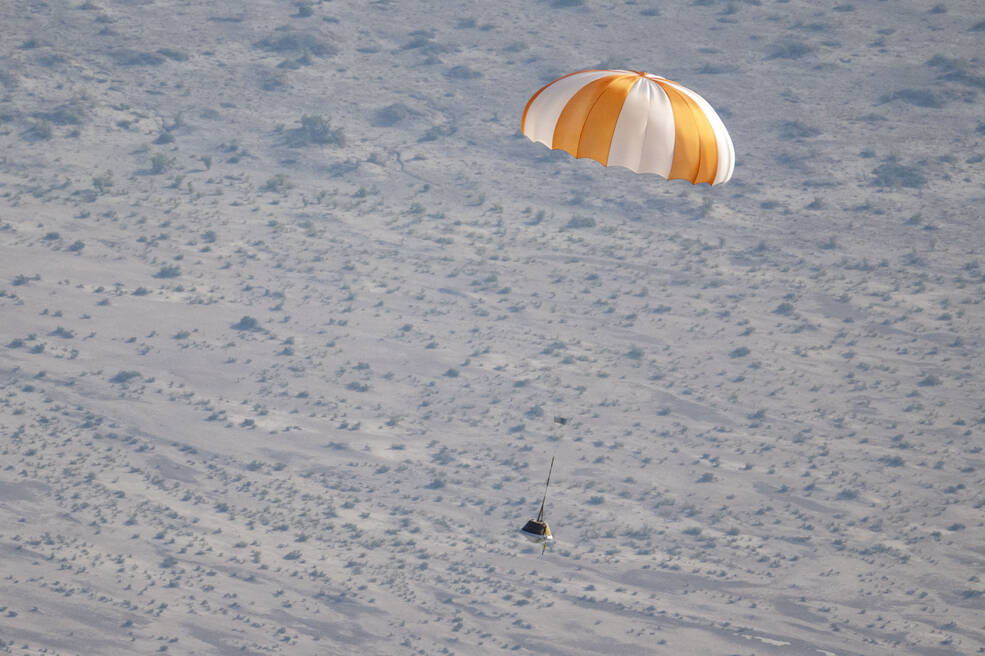
“We are now mere weeks away from receiving a piece of solar system history on Earth, and this successful drop test ensures we’re ready,” said Nicola Fox, associate administrator of NASA’s Science Mission Directorate. “Pristine material from asteroid Bennu will help shed light on the formation of our solar system 4.5 billion years ago, and perhaps even on how life on Earth began.”
This drop test follows a series of earlier rehearsals – capsule recovery, spacecraft engineering operations, and sample curation procedures – conducted earlier this spring and summer.
Now, with less than three weeks until the spacecraft’s arrival, the OSIRIS-REx team is nearing the end of rehearsals and ready for the actual delivery.
“I am immensely proud of the efforts our team has poured into this endeavor,” said Dante Lauretta, principal investigator for OSIRIS-REx at the University of Arizona, Tucson. “Just as our meticulous planning and rehearsal prepared us to collect a sample from Bennu, we have honed our skills for sample recovery.”
The capsule is carrying an estimated 8.8 ounces of rocky material collected from the surface of the asteroid Bennu in 2020. Researchers will study the sample in the coming years to learn about how our planet and solar system formed, as well as the origin of organics that may have led to life on Earth.
OSIRIS-REx is NASA’s first asteroid sample return mission. It launched in September 2016 on a journey to explore a near-Earth asteroid called Bennu. The mission’s thrilling finale will take place on Sep. 24, as a capsule containing the Bennu samples touches down in Utah’s West Desert.Credits: NASA
The capsule will enter Earth’s atmosphere Sept. 24 at 9:42 a.m. CDT, traveling about 27,650 mph. NASA’s live coverage of the capsule landing starts at 9 a.m. CDT, and will air on NASA TV, the NASA app, and the agency’s website.
“We are now in the final leg of this seven-year journey, and it feels very much like the last few miles of a marathon, with a confluence of emotions like pride and joy coexisting with a determined focus to complete the race well,” said Rich Burns, project manager for OSIRIS-REx at NASA’s Goddard Space Flight Center.
Once located and packaged for travel, the capsule will be flown to a temporary clean room on the military range, where it will undergo initial processing and disassembly in preparation for its journey by aircraft to NASA’s Johnson Space Center, where the sample will be documented, cared for, and distributed for analysis to scientists worldwide.
Goddard provides overall mission management, systems engineering, and the safety and mission assurance for OSIRIS-REx. Dante Lauretta of the University of Arizona, Tucson, is the principal investigator. The university leads the science team and the mission’s science observation planning and data processing. Lockheed Martin Space in Littleton, Colorado, built the spacecraft and provides flight operations. Goddard and KinetX Aerospace are responsible for navigating the OSIRIS-REx spacecraft. Curation for OSIRIS-REx, including processing the sample when it arrives on Earth, will take place at Johnson. International partnerships on this mission include the OSIRIS-REx Laser Altimeter instrument from CSA (the Canadian Space Agency) and asteroid sample science collaboration with JAXA’s (the Japan Aerospace Exploration Agency) Hayabusa2 mission.
OSIRIS-REx is the third mission in NASA’s New Frontiers Program, managed by NASA’s Marshall Space Flight Center for the agency’s Science Mission Directorate.
NASA’s SLS Mega Rocket: What Is the ICPS?
NASA’s SLS (Space Launch System) rocket’s ICPS (interim cryogenic propulsion stage), with its single RL10 engine, produces 24,750 pounds of thrust to provide in-space propulsion for the agency’s Artemis II and III missions, the first crewed missions under Artemis.
Like the mega rocket’s core stage, the ICPS uses liquid hydrogen and liquid oxygen to power its RL10 engine, manufactured by Aerojet Rocketdyne, an L3Harris Technologies company. The ICPS is built by ULA (United Launch Alliance) and Boeing. In addition to providing in-space propulsion, the ICPS also contains avionics to fly the mission after core stage separation until NASA’s Orion spacecraft separates from the ICPS to venture to the Moon.
NASA’s Marshall Space Flight Center manages the SLS Program.
Moon Orbiter Preparing Artemis Astronauts Featured on ‘This Week at NASA’
Data from NASA’s Lunar Reconnaissance Orbiter, or LRO, was used during a recent training session to help familiarize the Artemis II astronauts with what they can expect to see from lunar orbit on their upcoming mission around the Moon. The training is featured in “This Week @ NASA,” a weekly video program broadcast on NASA-TV and posted online.
The training involved scientific visualizations to help them identify lunar landmarks, geological features, and areas of interest for future Artemis Moon landings. LRO has returned a treasure trove of scientific data during its fourteen years of observing the Moon.
The Lunar Reconnaissance Orbiter is part of NASA’s Discovery Program, which is managed by the Planetary Missions Program Office at the agency’s Marshall Space Flight Center.
View this and previous episodes at “This Week @NASA” on NASA’s YouTube page.
El Gordo: A Galaxy Cluster That Pushes the Limits
When astronomers discovered the galaxy cluster ACT-CL J0102-4915 in 2012 with NASA’s Chandra X-ray Observatory and ground-based optical telescopes, they nicknamed it “El Gordo” (Spanish for the “Fat One”) because of its gigantic mass. Scientists estimate that El Gordo contains as much as 3 million billion (3,000,000,000,000,000) times the mass of the Sun. Thanks to its heft, El Gordo acts as a natural lens, distorting the light from more distant objects behind it through a process known as gravitational lensing.
A new composite image of El Gordo shows the diffuse, superheated gas in the cluster observed in X-rays from Chandra (blue) that have been combined with a new infrared image from NASA’s James Webb Space Telescope (red, green, and blue). Webb’s image shows galaxies in El Gordo plus background galaxies located further away from Earth. El Gordo is located about 7.3 billion light-years from Earth and the background galaxies are at a range of different distances including several that are 12.3 billion light-years from Earth. The appearance of some of the background galaxies has been distorted into a variety of unusual and highly elongated shapes because of gravitational lensing by the cluster.
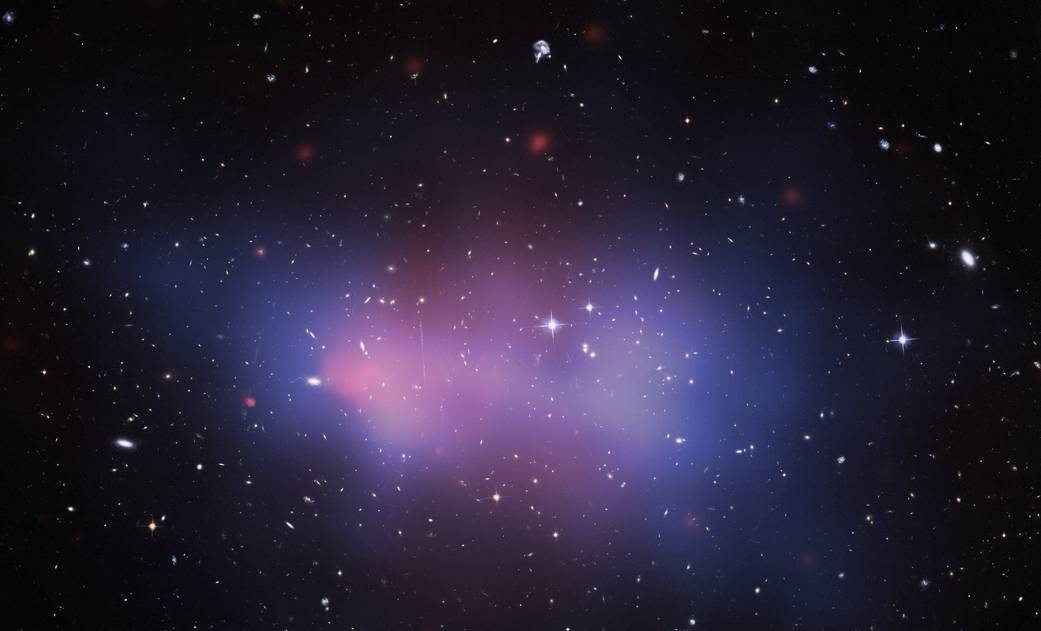
The X-ray image of El Gordo reveals a distinct cometary appearance. Along with optical data, astronomers reported in 2012 that this shape implies El Gordo is, in fact, the site of two galaxy clusters that ran into one another at several million miles per hour. The same study also used Chandra and other observatories to show that El Gordo is the most massive, and produces the most X-rays, of any known galaxy cluster at its distance or beyond.
Four new papers discussing the Webb observations have recently been accepted, including two that discuss Chandra data. Newer Chandra observations obtained after the 2012 study increase the exposure time by a factor of six, providing much more detailed information about the density and temperature of the cluster’s hot gas. Those Chandra-inclusive papers are led by Brenda Frye (University of Arizona) and Jose Diego (Instituto de Fisica de Cantabria, Spain). All four papers are part of the JWST “Prime Extragalactic Areas for Reionization and Lensing Science” (PEARLS) project led by Rogier Windhorst of Arizona State University. Highlights of the results from the papers are described in a press release from Space Telescope Science Institute.
NASA’s Marshall Space Flight Center manages the Chandra program. The Smithsonian Astrophysical Observatory’s Chandra X-ray Center controls science operations from Cambridge, Massachusetts, and flight operations from Burlington, Massachusetts.


























